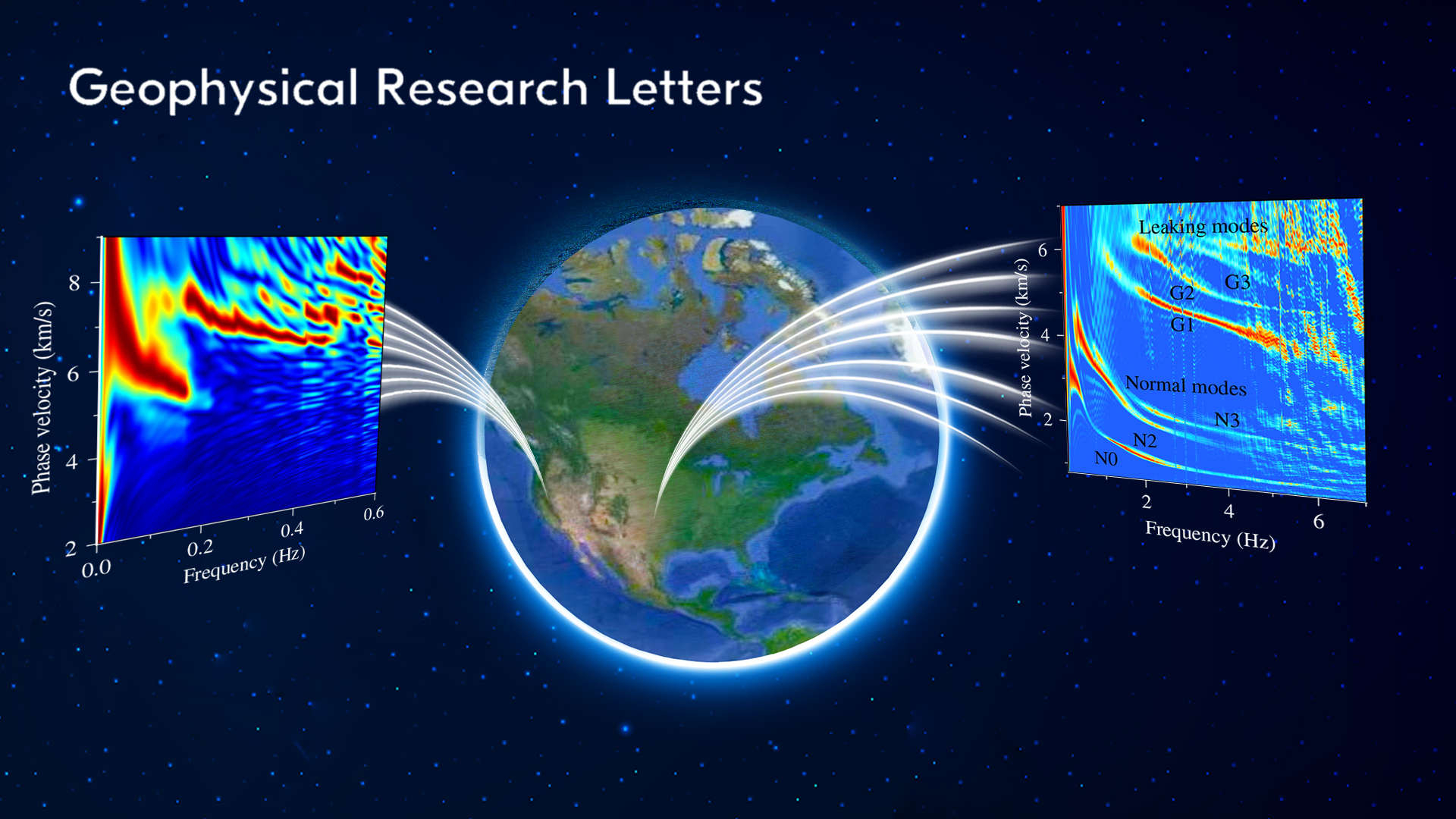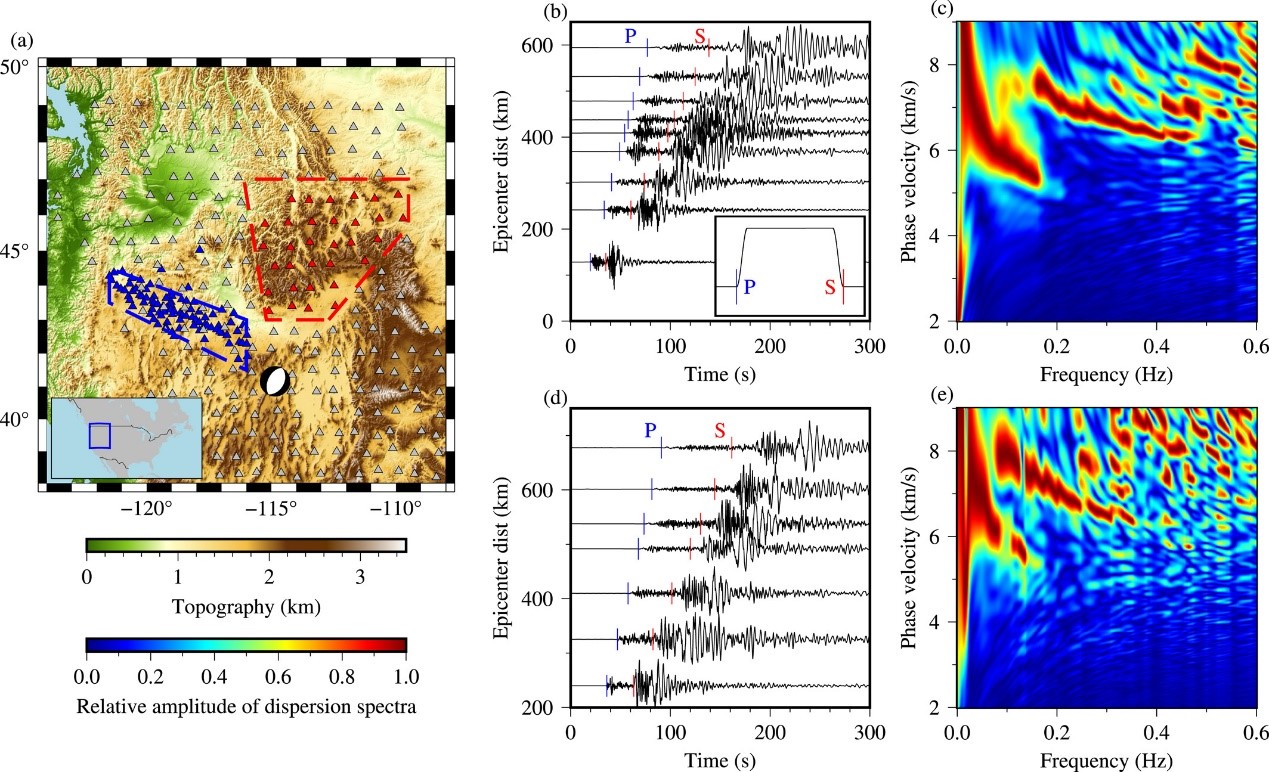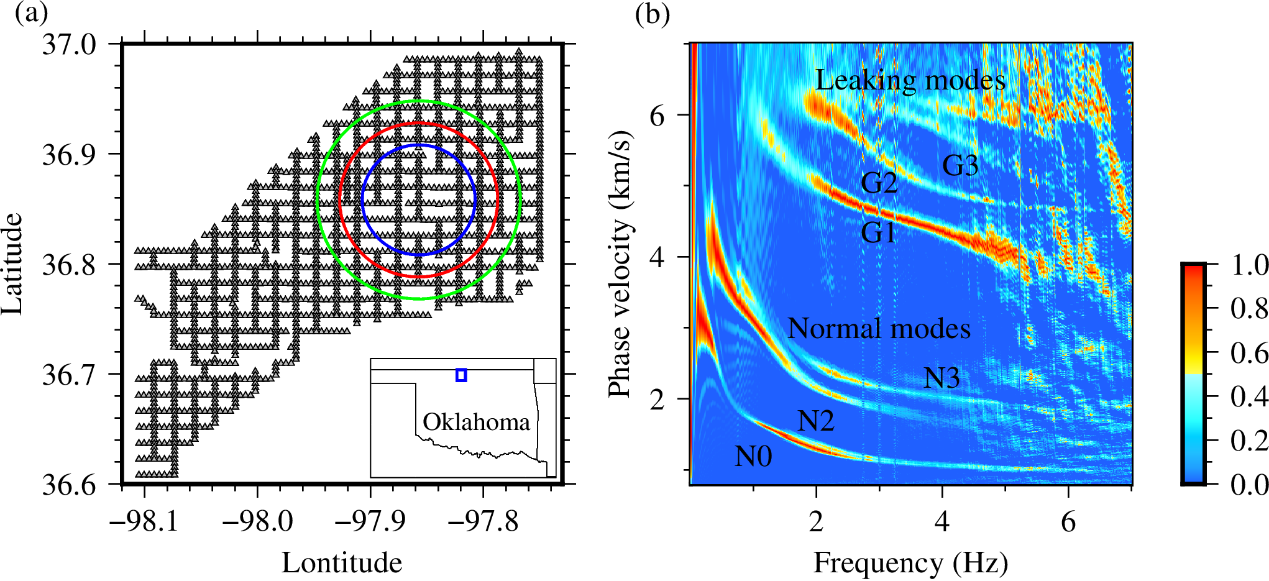New progress on seismic leaky mode observation
Colin LI 2022-03-15
Dispersion means that waves have different propagation velocities at different frequencies. Dispersion curve inversion is an important technique in seismology to detect the inner structure of the earth. The traditional dispersion curve usually refers to the normal mode dispersion curve extracted from Rayleigh or Love surface waves. In addition to the normal modes occupying the main energy in the seismic wave, the leaky (leaking) mode of weak energy also exhibits dispersion.
Recently, the research group of Academician Xiaofei Chen from the Department of Earth and Space Sciences at the Southern University of Science and Technology (SUSTech) has achieved a series of important results in the dispersion observation of leaky mode. It has successively published two related academic papers in Geophysical Research Letters, one of which was selected as an American Geophysical Union (AGU) Research Spotlight.

Based on the frequency-Bessel transform method recently proposed by Prof. Chen’s group, which can effectively improve the number and quality of normal mode dispersion extraction, the researchers reported the first observations of high-mode leaky mode from the seismic wave record and the ambient noise cross-correlation. Different from the normal mode dispersion curve, which is mainly sensitive to the underground S-wave velocity structure, the leaky mode dispersion curve can effectively provide constraints on the underground P-wave velocity structure.
 Figure 1. The leaky mode dispersion curves observed from the 2008 Nevada earthquake
Figure 1. The leaky mode dispersion curves observed from the 2008 Nevada earthquake
The first paper was entitled “Constraints on Crustal P Wave Structure With Leaking Mode Dispersion Curves”. In this study, the multimodal leaky mode dispersion curves were successfully extracted from the 2008 Nevada earthquake. The sensitivity analysis indicated that the extracted high-mode leaky modes could provide constraints on the subsurface P-wave velocity.
Zhengbo Li, a postdoctoral fellow in Prof. Xiaofei Chen’s research group, is the first author of this paper. Prof. Chen is the corresponding author, and SUSTech is the first unit of the paper.
 Figure 2. The leaky modes observed from ambient noise cross-correlation recorded by the LAsso Array
Figure 2. The leaky modes observed from ambient noise cross-correlation recorded by the LAsso Array
The second paper was entitled: “Multiple Leaking Mode Dispersion Observations and Applications From Ambient Noise Cross-Correlation in Oklahoma”. This study further reports the extraction of leaky modes in the ambient noise cross-correlations.
Ambient noise cross-correlation technology is one of the most important seismological advances in the past two decades. It allows seismologists to convert long-term noise signals recorded by seismographs into useful seismic signals, thereby making underground structure detection independent of earthquakes or artificial sources.
This study confirmed the existence of leaky mode in the ambient noise cross-correlation and based on the extracted leaky modes, a reliable underground P-wave velocity structure was obtained by inversion. The work was also selected as a research spotlight on AGU, and relevant reports were published on the AGU science news website EOS.
Zhengbo Li is the first author of this paper. Prof. Xiaofei Chen and Zhengbo Li are the corresponding authors, and SUSTech is the first unit of the paper.
This research was funded by the National Natural Science Foundation of China (NSFC), Shenzhen Key Laboratory, Shenzhen Science and Technology Program.
Paper links (In order of appearance above):
Geophysical Research Letters (Constraints on Crustal P Wave Structure With Leaking Mode Dispersion Curves): https://doi.org/10.1029/2020GL091782
Geophysical Research Letters (Constraints on Crustal P Wave Structure With Leaking Mode Dispersion Curves): https://doi.org/10.1029/2021GL096032
EOS (Potential of Leaking Modes to Reveal Underground Structure): https://doi.org/10.1029/2022EO220125
Related link:
Journal of Geophysical Research: Solid Earth (2019): https://doi.org/10.1029/2018JB016595
Seismological Research Letters (2021): https://doi.org/10.1785/0220210042




